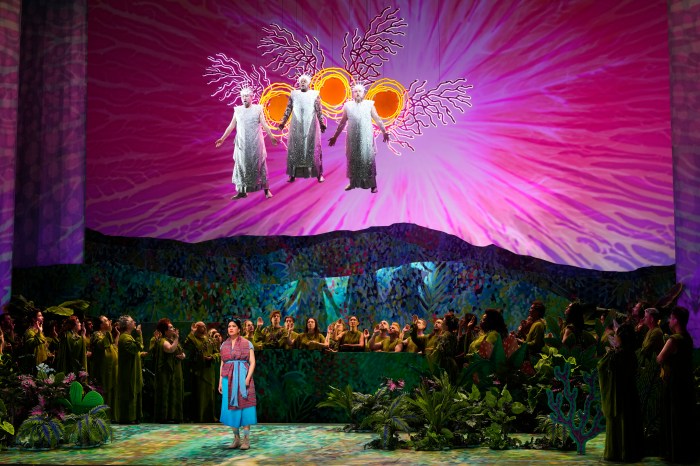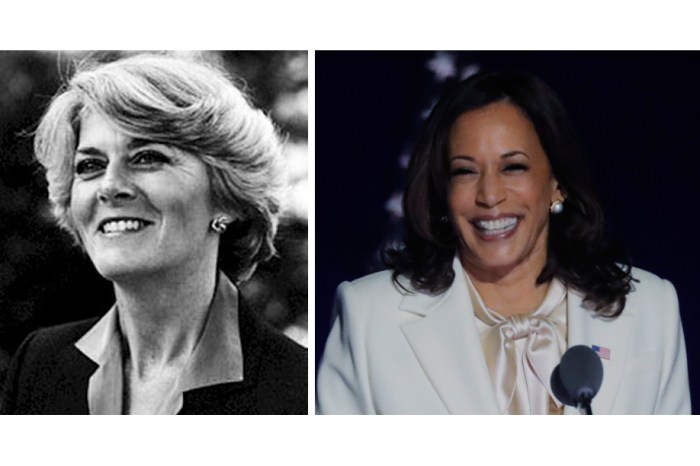
There’s a key moment early in “Vision Portraits” — Rodney Evans’ new documentary about four visually impaired artists, including himself — when one of his subjects recalls how his family reacted to the news that he had lost almost all of his sight due in part to an HIV-related illness.
Acclaimed Greenwich Village photographer John Dugdale’s family told him they were so proud of his work, assuming he was done with it. To say that resonated with Evans is to put it mildly.
“He was like, ‘Were? Past tense? Oh, hell no,’” explains Evans. “That word just echoed in his head, like, ‘You think I’m going to stop? Did you assume that?’ That becomes something that spurred him on, that makes him want to prove even more they’ve completely underestimated what he’s capable of.”
Dugdale, who first shared his vision problem with his family around 1993, went on to become even more prolific than he was before his affliction, creating ghostly profiles of people. Evans, too, has not let his disability slow him down. He was first diagnosed with retinitis pigmentosa, a rare eye disease, in 1997. His visual field is currently about 20%; he has no peripheral vision and only a fraction of night vision.

Still, he’s persisted. In 2004, Evans won the Special Jury Prize at the 2004 Sundance Film Festival for the drama “Brother to Brother,” co-starring a young Anthony Mackie. Based in Brooklyn, he now juggles filmmaking with teaching two to three classes a year at Swarthmore College, outside of Philadelphia.
In “Vision Portraits,” Evans peppers his own story in between sections on his other three subjects: Dugdale, Bronx-based dancer Kayla Hamilton and Canadian writer Ryan Knighton. Each has a different form of impairment. And all of their work, in one way or another, addresses their disabilities and challenges false assumptions.
For instance, Hamilton was born completely blind in one eye and only has partial vision in the other due to glaucoma and iritis. For her 2017 solo dance piece “Nearly Sighted,” she had the audience wear an eye patch.
“I think the general population just doesn’t understand there’s this wide spectrum between the fully sighted and the fully blind,” Evans says. “Many people exist somewhere along that spectrum, whether it’s cataracts or macular degeneration or retinitis pigmentosa or glaucoma or just being nearsighted. We’re all on this very precarious spectrum.”
As a film about visual impairment, “Vision Portraits” is incredibly visual. In between chats and day-to-day scenes with his subjects are avant-garde stretches where images become distorted and hard to parse — attempts to capture how all four see the world.
“A lot of the visual style came from wanting to put the audience in the subjective position of how the characters in the film see,” Evans explains.
He and his cinematographers, Kjerstin Rossi and Mark Tumas, played with the images, obscuring parts of the frame, shooting through and around strange surfaces.
“We weren’t afraid to have images that are not immediately readable to the audience, to have the audience a bit confused at points and for that to be OK,” Evans says.
All the subjects use art as a way to get by, and some have turned to technology to make things easier. Knighton — who, like Evans, has retinitis pigmentosa — is seen using a device to transcribe his prose as well as one that reads it back to him when he’s doing public appearances. “It becomes almost an oral form of literature,” Evans says. “That’s his style. He’s made it his style.”
As for Evans, he admits it wasn’t his idea to give his story about as much screen time as his subjects’. After he did the first cut, his co-editor, Hannah Buck, pushed him to be more of a presence.
“She said everyone was fleshed out except for you,” he recalls. “We don’t know who you are, we desperately want to.” Rather than write up a stiff, formal voice-over, he had Rossi interview him so that his words would be looser and more candid. At one point she asked him if he agrees with Dugdale, who says he finds blindness perversely freeing.
“I was like, [expletive] no!’ I am terrified of going blind and I’m doing everything that I can to maintain the vision that I have,” he recalls. “It’s not something I am slowly resigning myself to. I find it enraging, and being in this liminal space between the fully-sighted and the fully blind is a very emotionally fraught place to be.”
‘Vision Portraits’ director Rodney Evans will be in discussion at The Metrograph, 7 Ludlow St. For more details visit metrograph.com

















